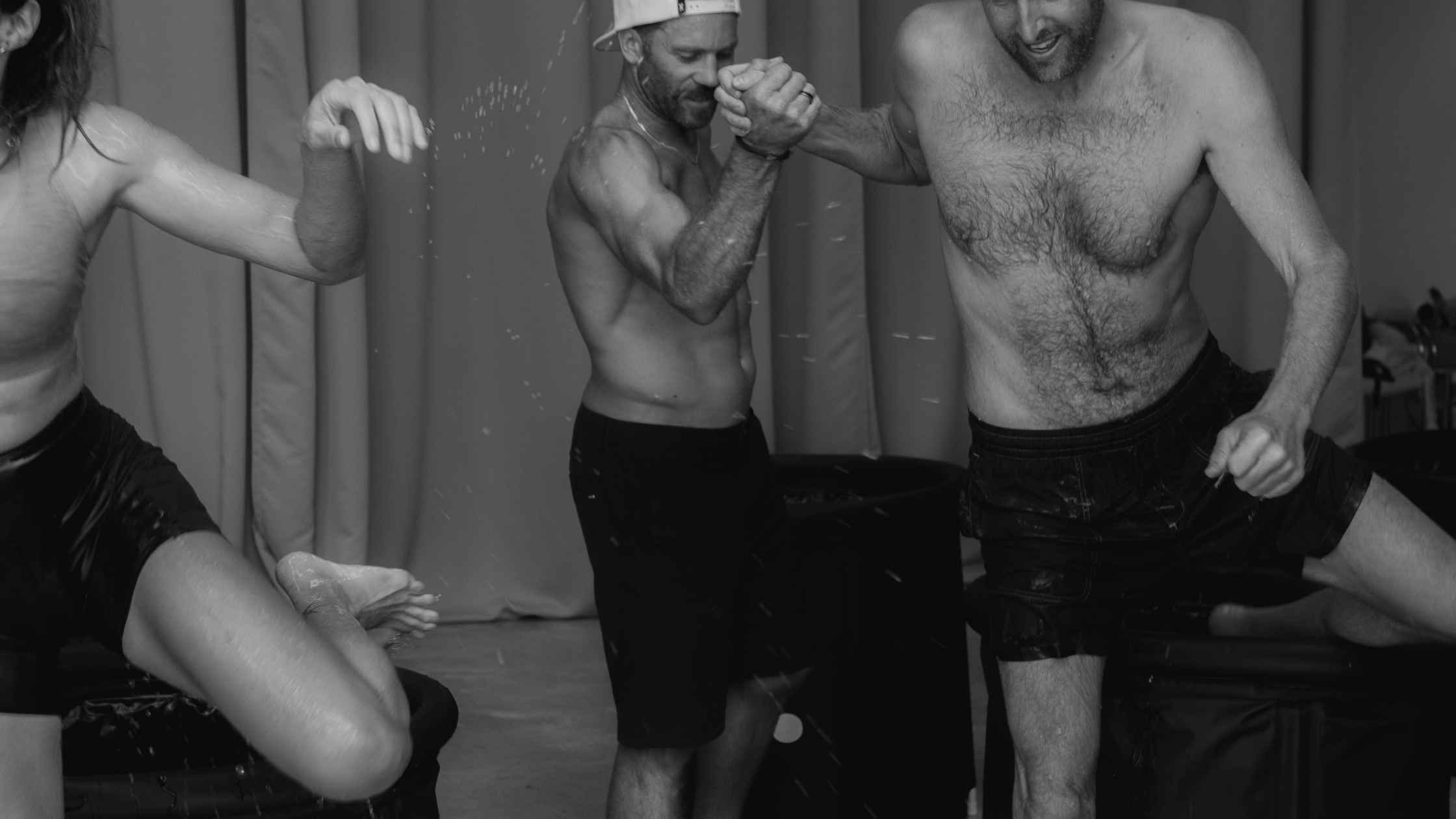Ice Bath After Running - Benefits of cold therapy for post run recovery
Benefits of Ice Bath After Running
With the local run club session being part of the weekly routine, more and more people are using ice baths to bounce back fast after running and other endurance based training. After a solid slog on the legs, it’s crucial to seek ways to minimise that post run pain and enhance recovery, while minimising the toll on the body.
In this article, we will delve into the numerous benefits of incorporating ice baths into your post-run recovery routine and explore how they can alleviate pain, reduce inflammation, minimise swelling, manage stress, alleviate delayed onset muscle soreness (DOMS), and synergise with sauna sessions for effective contrast therapy.
Do Ice Baths Speed Up Recovery?
Dr Rhonda Patrick weighs in on cold water immersion for recovery on her website, FoundMyFitness, by saying that “Cold exposure generally elicits positive effects in endurance exercise, likely because the adaptations are more specific to endurance activities or due to the timing of the cold exposure.”
Read Also: Best Places to Ice Bath in Sydney, Australia
But what about specifically ice baths for running and other endurance based exercise?
An icey plunge post endurance workout, race, soccer game or Saturday run club, could have you bouncing back faster in terms of perceived fatigue, reduced pain and soreness, and improved muscle repair.
Ice baths after running are thought to be a winner for improved recovery time, thanks to a couple of the following physiological responses to the cold:
Vasoconstriction and Blood Circulation:
Initial Vasoconstriction: When the body is exposed to cold water, blood vessels near the surface constrict (vasoconstriction). This is a natural response to conserve heat and prevent excessive cooling of the body's core.
Subsequent Vasodilation: After leaving the cold environment, the body experiences vasodilation, where the blood vessels expand. This can potentially enhance blood circulation, which may aid in the removal of metabolic waste products generated during exercise, such as lactic acid.
Reduction of Tissue Swelling and Inflammation:
Cold-induced vasoconstriction: Cold exposure can help reduce swelling and inflammation by limiting blood flow to the affected areas.
Anti-inflammatory effects: Cold therapy is believed to have anti-inflammatory effects, possibly by reducing the production of inflammatory mediators.
Analgesic (Pain-Reducing) Effects:
Numbing sensation: The cold can create a numbing effect, potentially reducing the perception of pain and discomfort.
Modulation of nerve conduction: Cold exposure may affect nerve conduction, reducing pain signals.
Muscle Cooling and Metabolic Rate:
Temperature reduction in muscle tissue: Ice baths can lower the temperature of muscle tissue, slowing down metabolic processes. This may help decrease cell damage and metabolic demands on the recovering muscles.
Potential reduction in secondary muscle damage: By minimising the metabolic activity in the muscles, ice baths might mitigate secondary muscle damage that could occur during the recovery period.
Psychological Benefits:
Perceived recovery: Even if the physiological effects are not fully understood or agreed upon, the psychological aspect of feeling refreshed and recovered after an ice bath may contribute to an athlete's overall sense of well-being, relating somewhat to perceived fatigue for repeated bouts of exercise being lower after having practiced cold water immersion.
Are Ice Baths Good For You?
Taking an ice bath post run
According to human biologist and biohacker Gary Brecka, “we know now that [the anti-inflammatory effects] of cold therapy are only about 15% of the benefit”. One of the big players in the effectiveness and potential benefits of cold therapy are cold shock proteins, “reserve proteins that are in the liver, dumped into the bloodstream in response to cold…scour the body of free radical oxidation and increase protein synthesis” says Brecka.
Cold shock proteins are one of the key reasons we get this amazing adaptive response from the hermetic stressor of the cold. Cold shock proteins play a role in cellular protection and repair.
They are involved in various cellular processes, including DNA repair, anti-inflammatory responses, and the prevention of cell death. The upregulation of these proteins during cold exposure may contribute to improved cellular resilience and longevity.
Cold exposure has been linked to an increase in mitochondrial biogenesis, which involves the generation of new mitochondria within cells. Our mitochondria are the cellular powerhouses responsible for energy production. Cold exposure, through mechanisms like activation of AMP-activated protein kinase (AMPK) and peroxisome proliferator-activated receptor gamma coactivator 1-alpha (PGC-1α), can stimulate the growth of new mitochondria. This process is crucial for cellular energy metabolism and overall cellular health.
Cold exposure activates brown adipose tissue (BAT), a type of fat that burns calories to generate heat. BAT is rich in mitochondria and is involved in non-shivering thermogenesis. Activation of BAT can contribute to increased energy expenditure, potentially aiding in weight management. Studies using positron emission tomography (PET) scans have demonstrated increased BAT activity in response to cold exposure.
There’s also the mental health benefits of cold exposure, which can I turn lead to greater physical performance. Cold exposure has been associated with positive effects on mood, alertness, and mental well-being. With a cold plunge being a known activator of the sympathetic nervous system and releases neurotransmitters such as norepinephrine. These neurochemical changes can have mood-enhancing and antidepressant-like effects. Additionally, cold exposure may increase levels of beta-endorphins, which are natural opioids associated with improved mood.
Many people also turn to ice baths for pain management. Cold therapy, including ice baths, is commonly used for pain management and to reduce inflammation.
With the cold inducing vasoconstriction, limiting blood flow and reducing inflammation in the affected area. It also has a numbing effect, reducing pain signals. Cold therapy is often used in acute injuries, post-exercise recovery, and conditions involving inflammation, providing analgesic effects.
What to expect from ice baths after running?
While it’s important to understand that cold therapy is not the answer for every type of exercise and every recovery situation, there is evidence to prove that ice baths can be a super beneficial recovery tool for endurance based training recovery and when repeated or back to back performance is the goal.
The main things you can expect from using ice baths after your marathon, run, race or endurance based game are:
1. Pain Reduction:
Engaging in strenuous physical activity, such as running, can lead to microtrauma in muscles and joints, resulting in pain and discomfort. Ice baths work by constricting blood vessels and reducing nerve activity, thereby minimizing pain sensations. The cold temperature acts as a natural analgesic, providing immediate relief to runners struggling with post-exercise soreness.
2. Inflammation Control:
Inflammation is a natural response to exercise-induced stress, but excessive inflammation can impede recovery. Ice baths help regulate the inflammatory response by constricting blood vessels, reducing the flow of inflammatory mediators, and promoting vasoconstriction. This controlled reduction in inflammation aids in faster recovery without compromising the body's natural healing mechanisms.
3. Swelling Reduction:
Muscle and joint swelling often accompany intense physical activity. Cold therapy, as experienced in an ice bath, helps manage and reduce swelling by restricting blood flow to the affected areas. This constriction of blood vessels prevents the accumulation of excess fluids, leading to a more efficient recovery process.
4. Alleviating DOMS:
Delayed onset muscle soreness (DOMS) is a common consequence of challenging workouts. Ice baths have been shown to alleviate the severity of DOMS by minimizing muscle damage and inflammation. The cold temperature helps in preventing the release of certain enzymes that contribute to muscle breakdown, ultimately leading to a more comfortable recovery period.
5. Enhanced Lymphatic Drainage:
Ice baths not only reduce pain and inflammation but also facilitate improved lymphatic drainage. The lymphatic system plays a crucial role in removing waste products and toxins from muscles. Cold therapy helps to stimulate the flow of lymphatic fluid, enhancing the body's ability to flush out metabolic byproducts and reduce muscle stiffness.
Conclusion on Ice Baths After Running
Ice baths have emerged as a valuable tool in the arsenal of athletes seeking efficient post-run recovery strategies. By mitigating pain, inflammation, swelling, and DOMS while enhancing lymphatic drainage, ice baths provide a holistic solution for a quicker and more comfortable recuperation.
When combined with sauna sessions for contrast therapy, the synergistic effects further elevate the overall recovery experience. As with any recovery method, it's crucial to tailor these practices to individual needs and preferences, ensuring a balanced and sustainable approach to post-run recovery.


